National Parks Essential Packing List
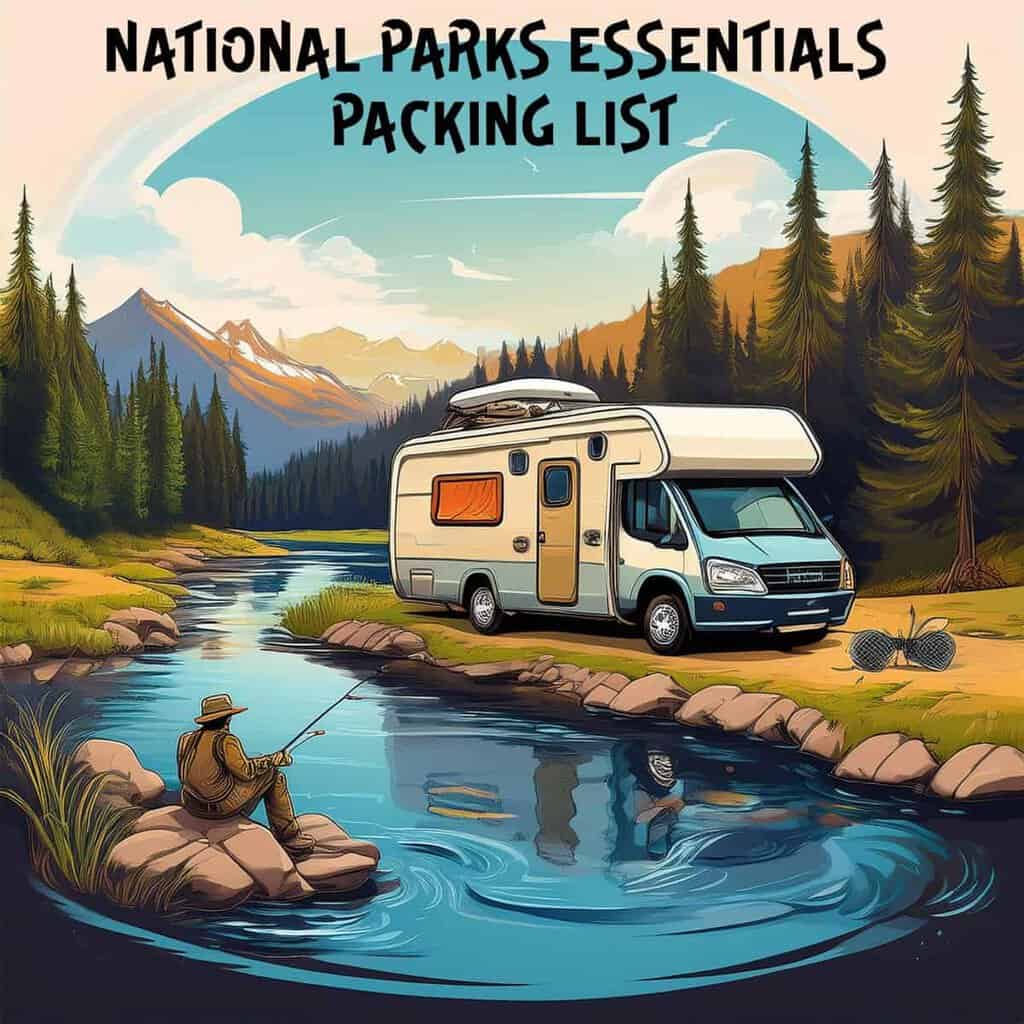
Packing the right equipment for your trip is important. Having an essential packing list is helpful when planning your visit to the national parks. I do not know how many times we have arrived at our destination and remarked I wish I had brought that with us. It is annoying knowing you have the item at home and wasting the money on a new one is difficult. Then you have to think about taking it back in your luggage.
Free downloadable packing checklist – click here. I hope the following lists will be helpful and prevent the disappointment we have had because we forgot an important item. Happy Trails!!
Note: This page may contain affiliate links, meaning if you purchase something through one of these links, we may earn a small commission at no extra cost to you! Read the full disclosure policy here
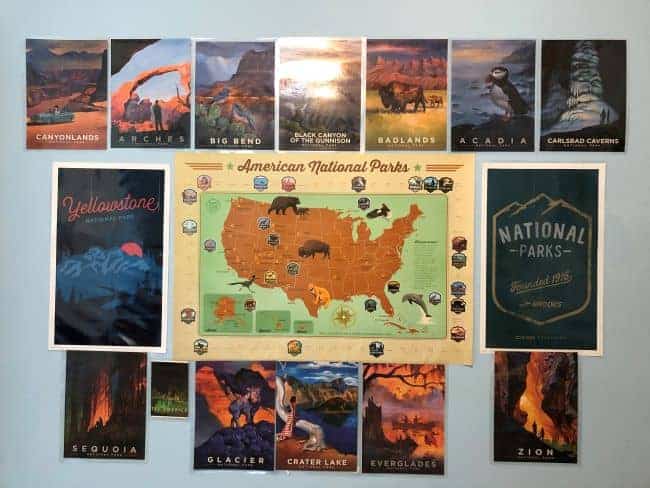
Table of Contents
What Should You Consider Before Traveling to the National Parks
There are a few things to consider when preparing for your trip to the National Parks.
- Will you be going to a warm or cold climate?
- Passport to Your National Parks– Collector’s Edition journal is a MUST have those that record their travels. My new passion is traveling to all the wonderful places in this book. I find it priceless!
- Are you traveling by car or by airplane? The airplane will require watching the weight of luggage and TSA travel requirements.
- One suggestion here; if you are planning on visiting over one national park, it is worthwhile to purchase the Annual Pass ($80). The U.S. Park Pass The America the Beautiful National Park and Federal Recreational Lands Pass is your ticket to more than 2,000 federal recreation sites across the country.
- I would also suggest packing for the weather and elevation changes you encounter as you travel through the parks.
- Final Pro Tip: Roll clothes, pack heavy items close to your back, and leave unnecessary luxuries behind. Parks are all about simplicity and wonder—you’ve got this!
- Trail Map/Compass (Yes, Even If You Use GPS)
Cell service? More like cell “no service.” Old-school tools are your backup BFFs when tech fails.
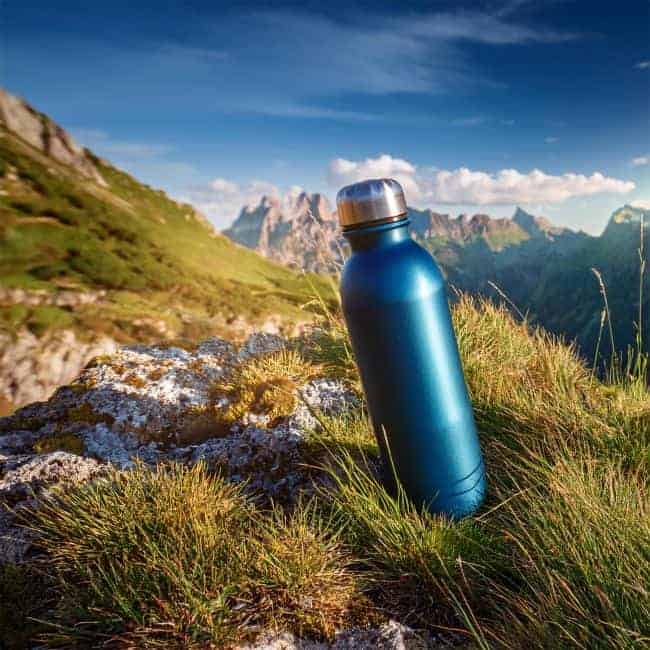
Trail Essentials for the National Parks Traveler
Most Important!! Water.: Hydrate or die-drate! Use a hydration bladder for hands-free sipping or a reusable bottle. Pro tip: Add electrolyte tabs for long hikes.
Hydration Bladder (2+ Liters) A good backpack with a water bladder for hiking can ensure you stay hydrated on the trail. The backpack has additional storage for phones and other items. Also of note is the ability to freeze water in the bladder prior to going out on a sweltering day.
Reusable Water Bottle with filter–Hydrate or die-drate! A good rule of thumb is to bring about 3 quarts (2L) of water for each adult. Although many visitor centers now have free water refill stations, we enjoy having the life straw for hiking. If we run out, we can always use any stream or lake to refill safely. We also keep a refillable thermos flask water bottle in the car when traveling that keeps that water cold over a long period.
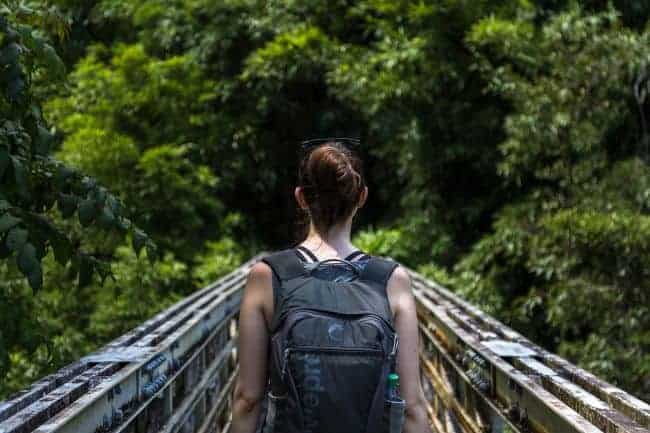
A Good Day Pack is your mobile command center. Carry gear comfortably—bonus points for pockets to organize essentials! A good day pack for hiking and carrying your outdoor gear is a must-have. These day packs are waterproof and very lightweight. This bag has different compartments, it has two side compartments for water bottles. I like that it easily folds to fit into your luggage for the flight home. We also carry a lightweight set of dry bags to keep our equipment dry when fishing. This is easy for me to carry and hubby carries the hydration pack.
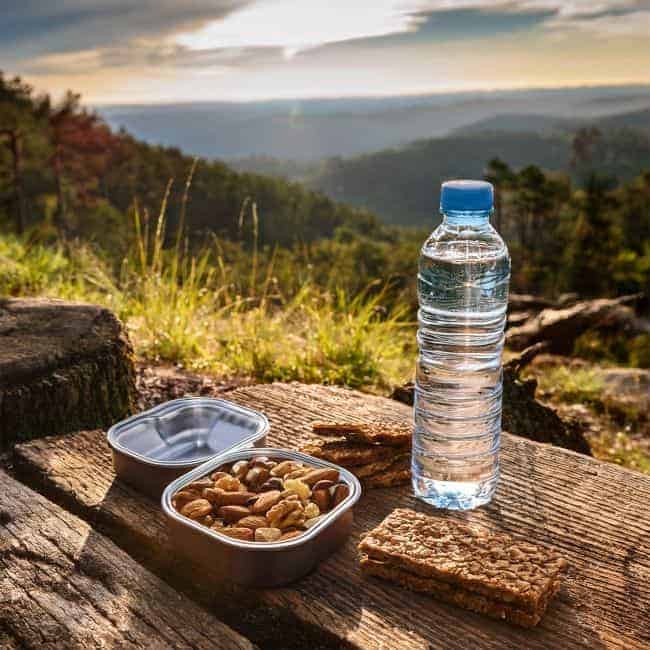
High-Energy Snacks (Trail Mix, Energy Bars, Jerky) Hanger is the enemy. Fuel your fun. When hunger hits mid-hike, these little lifesavers. Pack calorie-dense, non-messy bites to refuel on the go. Add chocolate for a morale boost! Snack Smart: Eat small portions often to maintain energy—don’t wait until you’re starving!
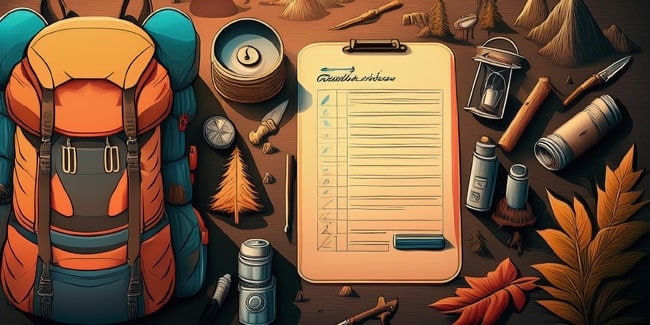
National Park Packing List Essentials – Luggage & Packing Gear
Purchasing travel organizers to compartmentalize similar size items and provide optimum utilization of interior luggage space. Clothes stay neat yet tidy in their own small drawers and will not shift in transit. These transfer to the RV or rental car easily as well. I bought these for Yellowstone a few years ago and they are still in excellent shape.
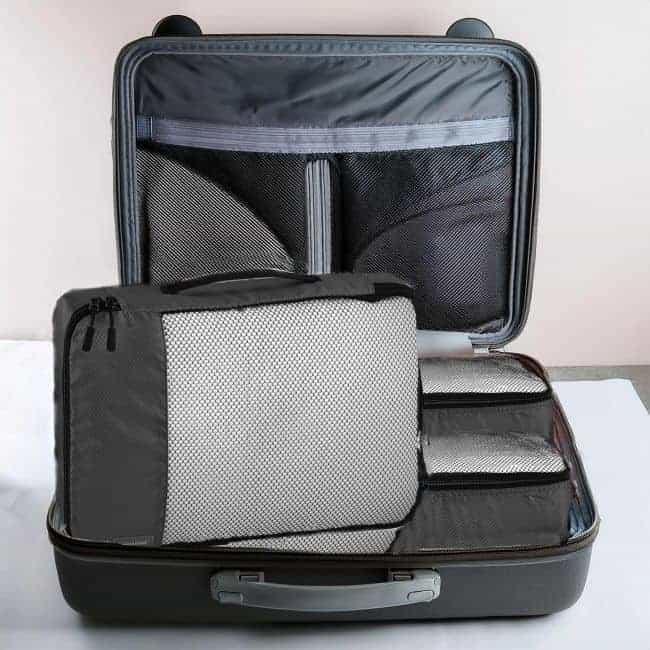
Submariner Large Waterproof Phone Pouch: On our recent trip to the Dry Tortugas and the Florida Keys, we found this phone pouch to be an added convenience for snorkeling and diving. It has a solid lanyard that has a secure clip. I read reviews of others that had lost phones when the lanyard broke. We can safely take pictures while in the water. We think this will work well for fishing, too.
Fanny Pack Hiking – If we are only doing a short hike, we find this is a better option for us. This pack also works great in theme parks, tram, or boat tours. The two water bottle pouches kept my LifeStraw secure and housed a rolled-up poncho for quick access when it rains.
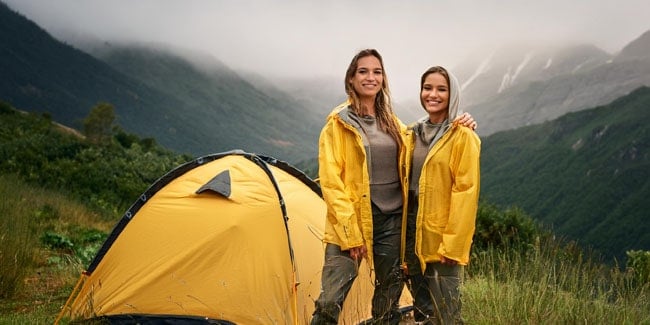
National Park Packing List Clothing Essentials
Rain Jacket + Pants (Lightweight, Packable)–Weatherproof armor for sudden downpours. I would suggest good weather gear if you plan to spend any time outdoors. Because we fish competitively regularly, we both brought our Columbia rain gear. Rain Jackets in Men’s and Women’s and Rain Pants in Men’s and Women’s. For chilly days, I layer a lightweight rain jacket for extra warmth. Look for pit zips (for airflow) and sealed seams. Fold them tiny when the sun comes out.
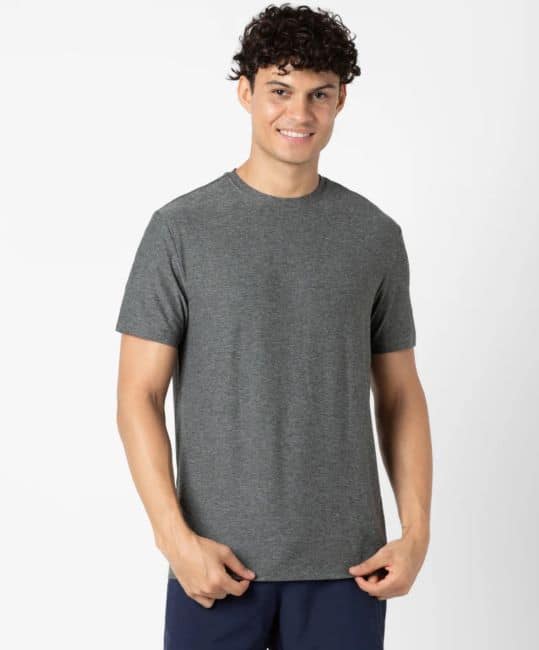
Tech Tee & Ridge Ripstop Pant: Perfect for outdoor adventures or casual outings, Bearbottom Clothing’s Tech Tee and Ridge Ripstop Pant offer comfort, durability, and performance. The lightweight, moisture-wicking Tech Tee ensures you stay cool and dry, while the Ridge Ripstop Pant. features a rugged, yet breathable fabric ideal for hiking, camping, or travel. These items’ designs prioritize movement, making them essential for your next adventure.
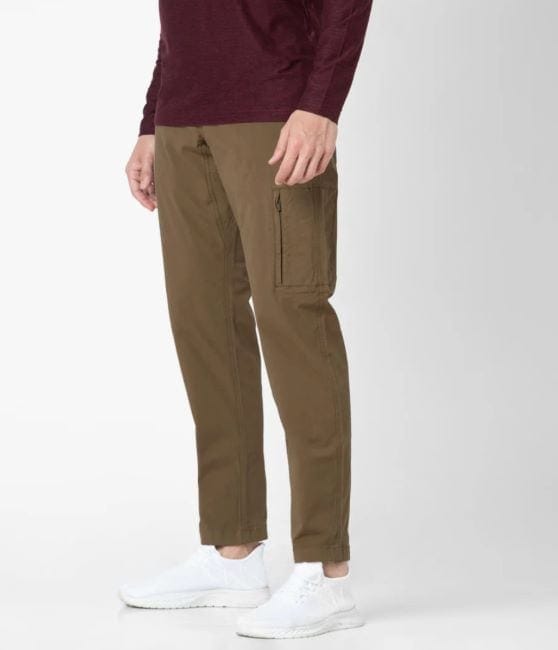
Convertible Hiking Pants: Women’s and Men’s are perfect for all-day hikes zip-off legs allow you to go from pants to shorts almost instantly. Breathable Omni-Wick technology hastens moisture from the skin into the fabric where it spreads across the surface quickly, evaporating—keeping you cool and your clothing dry. These are important when the mornings are cool and the afternoons are rather warm. UPF 50 to help block and shield from UVA and UVB sun rays.
Hooded Shirt (Moisture-Wicking, UPF 50+) Sunshield + rain-ready. The hood adds extra neck/ear protection when the weather flips. Pair with layers for warmth or breathability. We have a vast collection of these for fishing. The moisture-wicking fabric is breathable, lightweight, and quick-drying. The Columbia Omni-Shade sun-protection technology and fabric that has been engineered to block UVA and UVB rays to help prevent sunburn. They are a wonderful addition to travel to the parks and should be part of any packing list.
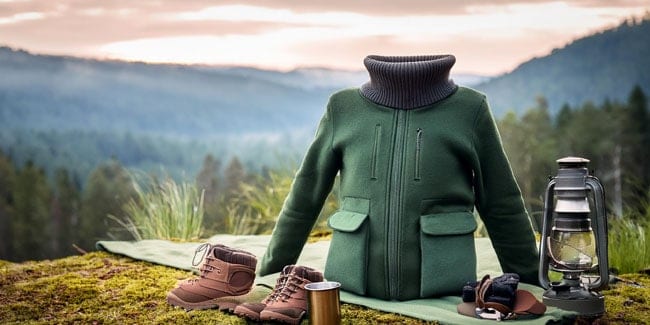
All-Weather Adventure Packing List: Ready for Sun & Weather Surprises!
Lightweight Hooded Fleece Jacket: Nature’s mood swings are real! Layer up to stay cozy in chilly mornings, shed heat during midday hikes, and stay dry if rain surprises you. Men’s and Women’s for the cool mornings and evenings. Wearing layers of the fleece is crucial in cooler climates like Yellowstone or Alaska. This is my 3rd Columbia fleece jacket. I love it. It’s lightweight and comfortable.
Wide-Brim Sun Hat: UV rays don’t play. Stay shaded during midday treks.
UV-Blocking Sun Gloves: Protect hands from sunburn while gripping trekking poles.
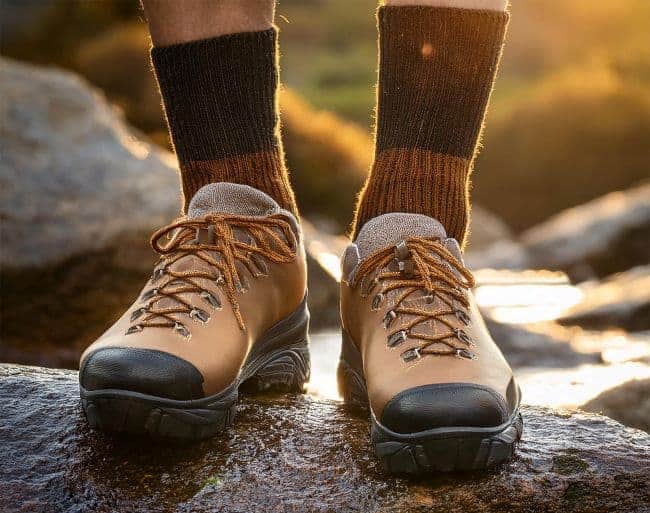
Waterproof Socks (Merino wool blend): Say goodbye to squelchy toes! – hot springs, lakes, or surprise rain puddles? Bought these to wear in our waders and wade shoes. Love these socks: they allow our feet to breathe but do not let exterior water get inside, keeping our feet toasty and dry. These socks are 98% waterproof. They don’t keep my feet totally dry when I’m standing in water, but they’re good enough to keep my feet mostly dry from the occasional splash or quick dunk. Thick socks work too!
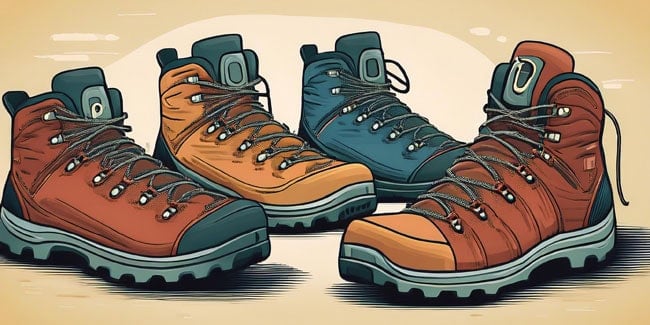
Hiking Boots Built for the Journey: Rocks, roots, and rivers won’t stand a chance if you have good walking or hiking shoes on the trails. Purchasing hiking shoes that are lightweight and quick-drying will keep you prepared for any weather event. Your boots are your adventure partners—invest time in choosing them, and they’ll carry you to epic views (and back!) blister-free.

Trekking Stick (Collapsible): Stability on steroids. Eases knee strain on descents, tests muddy puddles for depth, and doubles as a tent pole in a pinch. We often overlook a quality collapsible trekking stick on packing lists, but they’re actually extremely handy for hiking the variable terrain in the National Parks.
UV-Blocking Sunglasses (Polarized lenses) Glare? Gone. Protect your eyes from sun, wind, and trail dust while spotting distant vistas. Polarized lenses are also important when looking for fish in the river or lake. Very good quality and I like the general styling of these glasses. These will provide good sun protection, they seem to be pretty durable as well.
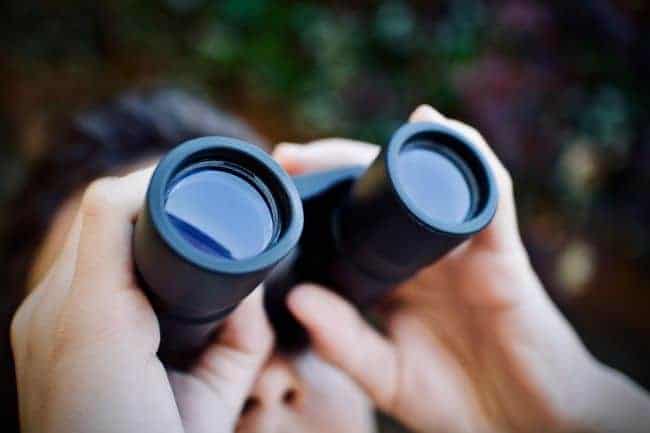
Tech Additions for Your National Park Packing List: Stay Safe, Connected & Wildly Smart!
Bushnell H2O Waterproof/Fog-proof Roof Prism Binocular: Eagle eye activated. Spot elk herds, birds, or that shy fox hiding in the distance. A pair of compact binoculars can be a significant addition to any travel pack and can come in handy in a wide variety of environments and situations. You might want a pair of the best compact binoculars when you are out hiking or exploring the great outdoors. Waterproof/Fog-proof is best.
We found that having the binocular pouch strap made it easier for hiking. The pouch protects your quality binoculars from the weather elements. It keeps them handy and opens for quick access and they are comfortable to wear.. The harness is sold separately and is adjustable for body size.
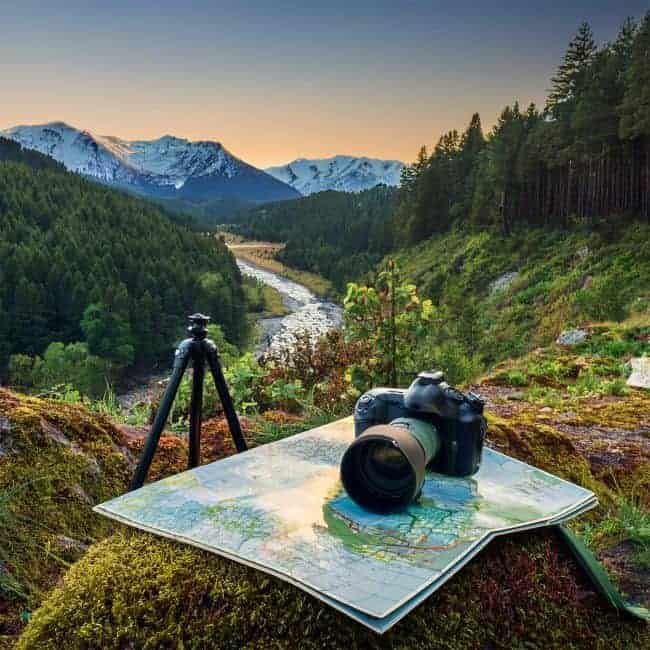
Action Camera (e.g., GoPro or AKASO) + Waterproof Case
Capture waterfalls, climbs, or wildlife encounters hands-free. Bonus: Time-lapse those epic sunsets! I love this camera. It is waterproof and uses a remote control. When we are fishing in rivers, I wear it on the binocular harness and use the remote to operate the camera. It takes great video. I purchased the activity kit with all the bells and whistles for every adventure you can think of.
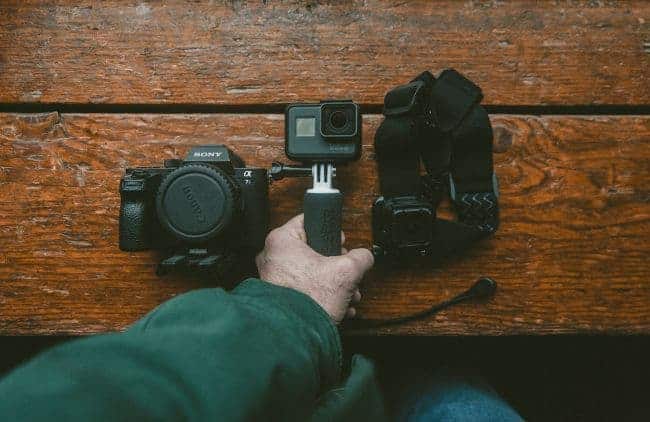
A Digital SLR camera is an excellent choice for travel photography. I got mine so that I have high-quality images. It allows for various settings, which can help me capture stunning photos in different environments. With a DSLR travelers can easily change lenses to suit their needs whether they want wide landscapes or close-up shots of wildlife. Additionally, these cameras often perform well in low light, making them ideal for capturing special moments during sunrise or sunset.
- Important to remember-camera batteries, chargers
- extra memory cards
- tripod
- Portable Charger + Weatherproof Phone Case: Keep the camera rolling for those “OMG-is-this-real?” views without risking a dead battery or soggy phone.
Dry Bag: (20L, bright color): better safe than soggy! The classic “roll-and-clip” design creates an airtight seal. Having a dry bag is absolutely crucial when snorkeling, kayaking, or fishing in the national parks. We use it to protect our binoculars, cameras, and other devices. The phone pouches we always use when snorkeling, since my husband’s phone is not waterproof. Bonus: Use it as a pillow when partially inflated!
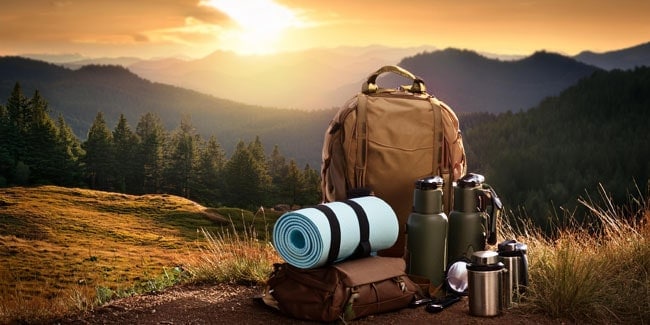
Packing Eco-Friendly Extras
Biodegradable Sunscreen: Sunburn? No thanks. The sun can be really harsh in any of the National Parks. We recommend using SPF-50 sunscreen lotion that is reef safe. One application will last me all day fishing or biking in the blazing Florida sun. We always strive to choose brands that use non-toxic materials to protect waterways.
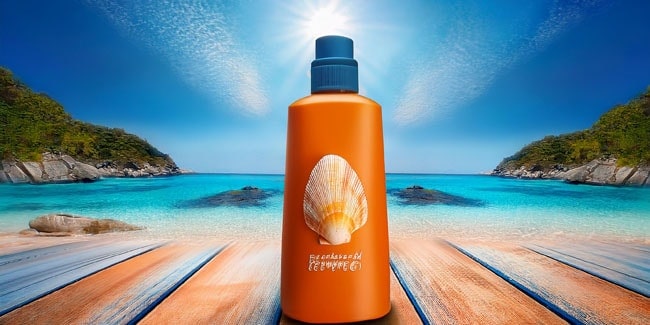
Biodegradable Bug Spray – In the summer months, bringing spray is insurance just in case. We usually travel in June to avoid the bugs. However, in the Everglades we needed it even in the winter months. In Florida, the mosquitoes never die. We use this because it is EPA-approved picaridin formula is safe, effective, and comes in a bottle that’s better than competitors at spraying evenly and accurately. We also need to be careful using it with fishing line.
Reusable Storage Bags for Hiking Trash Collection: Keep your hikes clean and odor-free with Smelly Proof Reusable Storage Bags! These durable, leak-proof bags feature activated carbon technology to lock in trash odors, making them perfect for packing out waste on the trail. Lightweight, eco-friendly, and reusable, they’re a must-have for responsible hikers who follow Leave No Trace principles.
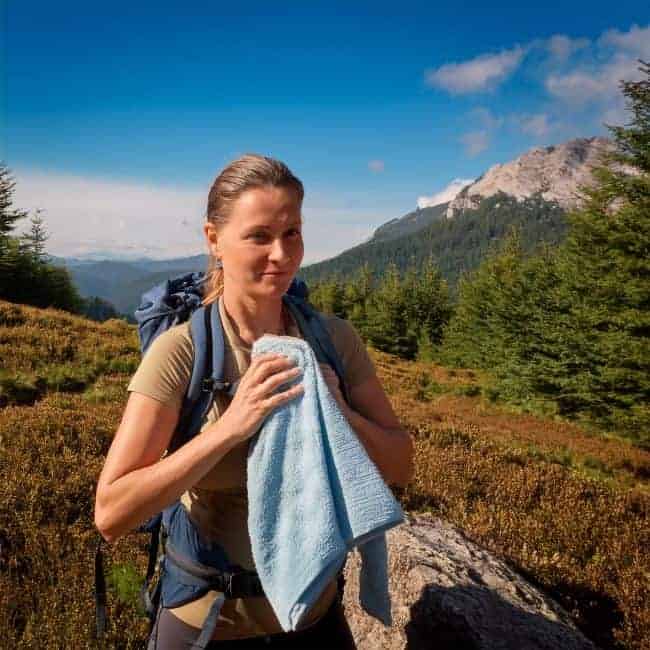
Quick-drying travel towel always comes in handy. This towel does not allow sand to stick to it. They are perfect for the beach or the boiling river in Yellowstone. Since we were flying, we needed a towel that didn’t take up a ton of space and also wouldn’t add a lot of weight to our bag. This is a significant addition to any National Park packing list.
Collapsible Cooler (Lightweight, insulated) Keep sandwiches, snacks, or drinks chilled on multi-day trips. We purchased one of these a few years ago. It fit on the bottom of our suitcase, taking very little room. The first thing we do to save on meals is to head to the local grocery and purchase items for lunches and breakfast for the collapsible cooler.. If we are driving, we take along freeze packs, if we are flying we purchase a good brick of ice. Doubles as a bear-proof food container (when hung properly!).
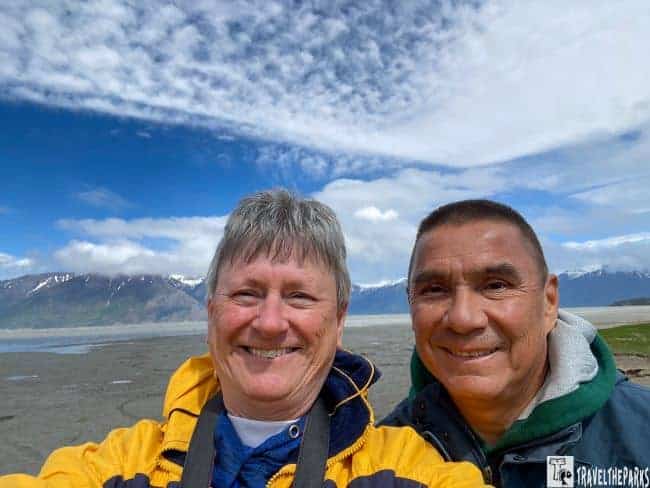
National Park Packing List Essentials: Alaska-Specific Pro Tips
Bear Spray (EPA-approved, holster-equipped): Non-negotiable for Alaska! You can rent bear spray in many places. Deter curious grizzlies (from a safe distance) and always keep it accessible—not buried in your pack. Remember to carry bear spray in a holster. It’s illegal to carry bear spray in your luggage. I recommend donating your spray to a ranger in the park office or the local police station once you have finished your trip.
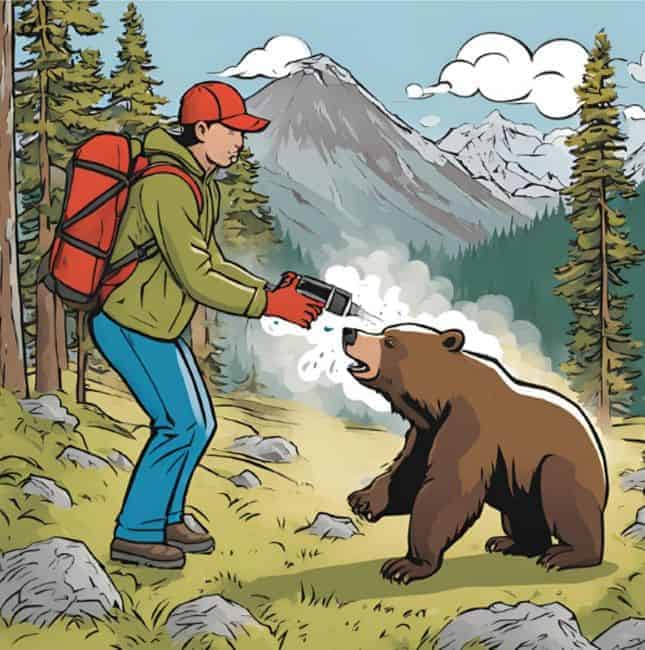
Thermal Underwear (Moisture-Wicking Base Layer): Your secret weapon against chills! Silky, breathable layers trap heat without sweat buildup—ideal for dawn hikes or chilly nights. It is always an excellent addition when travelling early season. Whether we are fishing the Madison River in Yellowstone or Brooks River in Katmai National Park, we needed to keep warm under our waders.
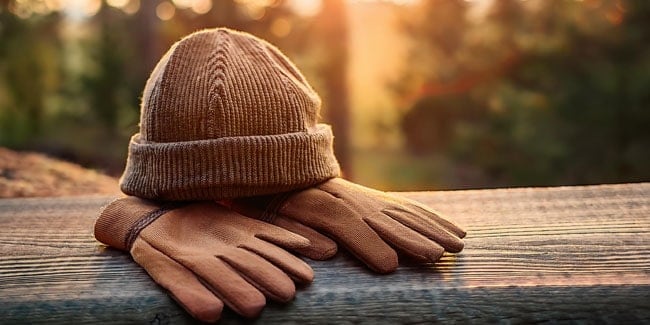
Silk Eye Mask (Breathable, adjustable): Sleep under the midnight sun. Alaska’s summer light is relentless—this is your darkness lifeline. Here the sun never sets in the summer. Investing in an eye mask may be helpful for sleeping.
Warm Beanie (Packable): For frosty mornings or alpine winds. Fold it tiny when not needed for cool days. We purchased the liners that fit into baseball hats since we can easily remove them for warmer weather. Easily converts any ball cap into a warm, windproof hat.
Waterproof Warm Gloves: Cold fingers ruin fun. Opt for touchscreen-friendly tips for phone use.We use these on a few of the colder mornings. They also come in handy for fishing in the lakes and rivers.
Mosquito head net : Your face’s forcefield! Essential for swampy trails or dusk camp setups. Pair with a hat to keep mesh off your skin as the mosquitoes are Alaska’s national bird. With this net you can now go forth, wander wild, and let those legendary mosquitoes whisper tales of the human who got away!
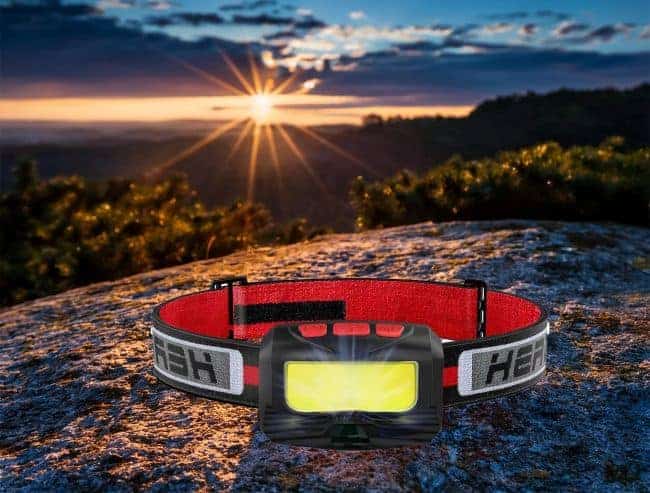
Comfort & Survival Essentials
Headlamp/Flashlight (+ Extra Batteries): Sunset hikes and midnight bathroom runs become way less spooky with hands-free light. I consider this an essential item when traveling. I like we can always have our hands free if we are arriving at our destination late, or if we are camping and have to use the restroom in the dark. We own two different headlamps, one attaches directly to our hats’ brims, and the other is the one shown here. This model we purchased is rechargeable and waterproof.
Travel Umbrella (Compact, Wind-Resistant): Rain? Snow? Sudden hail? A lightweight umbrella beats a stuffy rain jacket in mild weather. We use our travel umbrella on most trips. It is always handy to have, just in case the weather is not perfect. Bonus: Doubles as a sunshade!
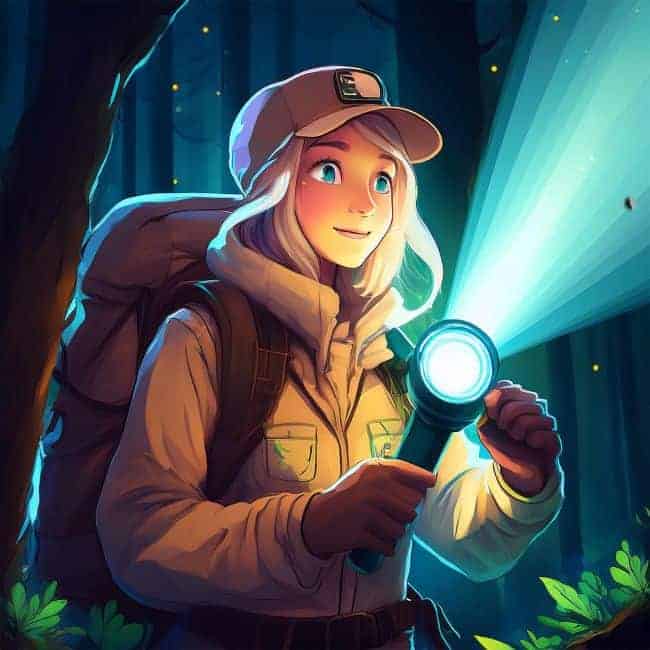
Flashlight (Weatherproof, High Lumens) Because headlamps can’t do it all. Light up campsites, trail markers, or dark tents. Extra points for a long-lasting battery! We always carry a flashlight, just in case a power failure happens in our RV.
Thermos (Insulated, leak-proof) Hot coffee at 5 AM? Yes. Keep soups, tea, or cocoa piping hot for hours. We find we enjoy having that second cup of coffee. A great warm-up when fishing cold rivers and streams. Hydration meets morale-boosting luxury. Of all the thermoses on the market, those made of stainless steel are perhaps the best for travel.
Anti-Nausea Acupressure Wristband: Dodgy roads or choppy boat rides? These non-medicated bands press on your inner wrist to curb motion sickness—no drowsiness, just relief. I was skeptical of their effectiveness before buying, but TRUST ME; they work wonders. These have proven to be extremely good at preventing motion sickness keeping queasiness at bay while whale watching or glacier touring. I have used these for years. This is my 2nd set. I feel an ounce of prevention is worth the cost of these. Even on a cruise, I never felt nauseous.
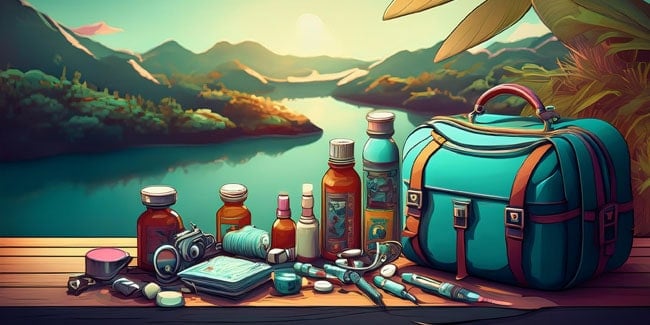
Travel First Aid Kit: For oopsies on the trail. This travel pack is extremely small and even has scissors. It will fit in your purse or day pack easily. We easily forget this item when packing for a trip. I must say that we have used our kit for emergencies. I sliced my finger fishing in Colorado. We used the kit to clean and wrap my finger before returning to fishing. Having this kit saved us from having to go to an emergency clinic.
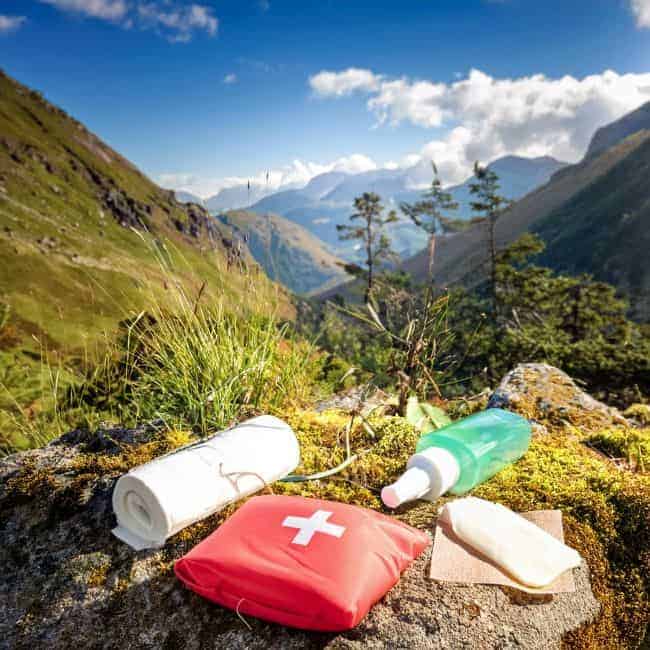
Earplugs (Noise-reducing, reusable) Drown out snoring tent-mates, howling winds, or campground chatter. Essential for bush plane flights too! These earplugs are perfect for a good night’s sleep while traveling.
Navigation & Safety Packing Essentials
Satellite Communicator (e.g., Garmin inReach) No cell signal? No problem! Send SOS alerts, share your location with loved ones, or check weather updates in remote areas. A lifesaver for backcountry adventures.
Paracord Bracelet (7+ feet of woven cord): Survival bling! Unravel it for emergency shoelaces, gear repairs, or securing a tarp. Lightweight and always on your wrist. They are lightweight and easily fit on your wrist. Paracord clips are gaining popularity because of their large range of uses. It comes equipt with the whistle, fire starter, light, and 7 feet of usable paracord seemed like an impressive addition for hiking in the national parks.
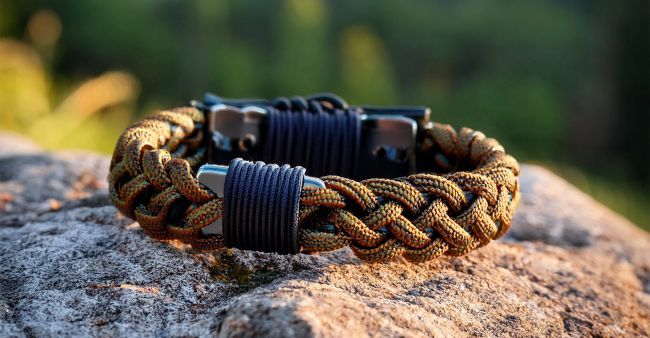
Multi-Tool/Pocket Knife
MacGyver moments await. Fix gear, slice cheese, or untangle knots—it’s the ultimate wingman. Having a multi-tool on your trip is helpful for those unexpected situations we all know happen. I cannot tell you how many times we have needed a screwdriver, corkscrew, or a knife. Although they must be placed in checked luggage, you just never know when it will come in handy.
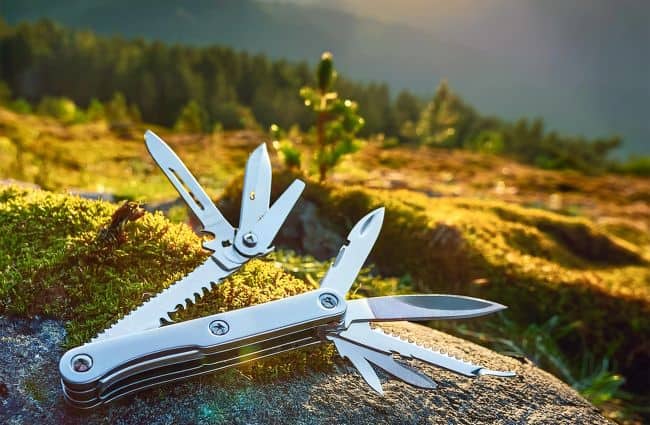
Fishing license: You can order this ahead of time online for most states, but it’s easy to get one from your fishing guide, or most local tackle stores or department stores (Sportsmans Warehouse etc).
I am sure that I have missed a few items here. However, these items will definitely enhance the enjoyment of your adventure in the national parks. We hope this helps you to better plan your trip. Now go conquer those trails—whether you’re squinting into the sun, trudging through sleet, or napping under the northern lights, you’ve got this!
